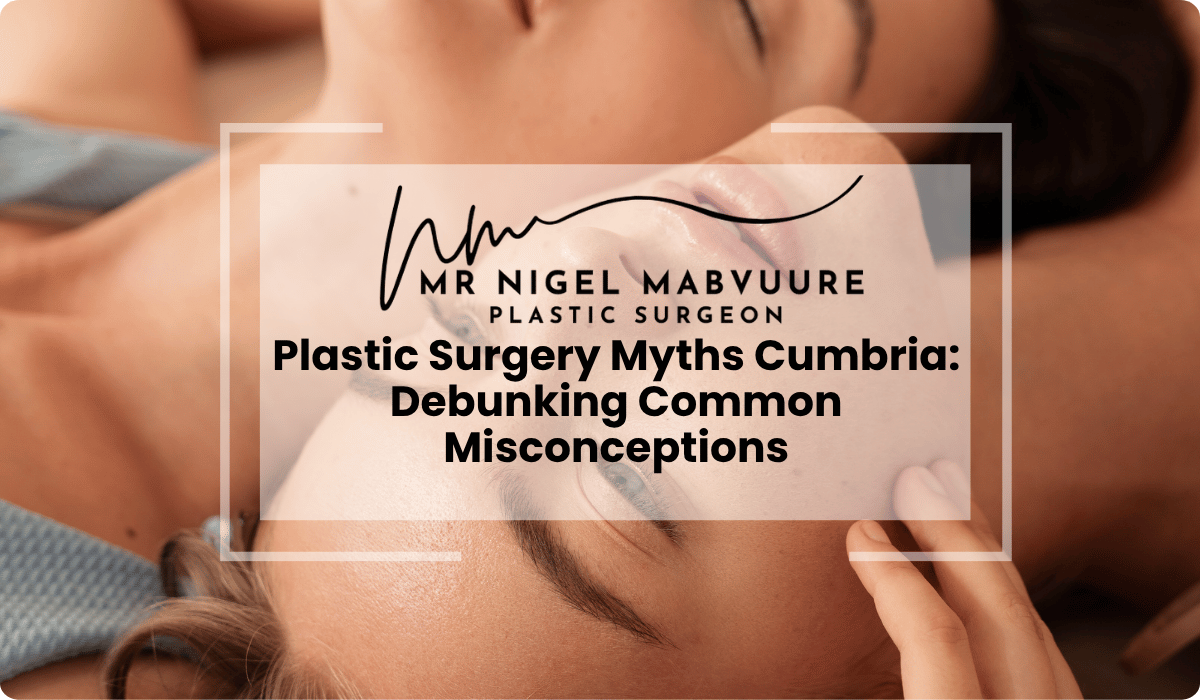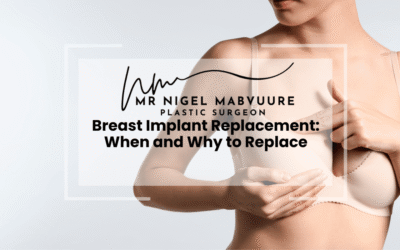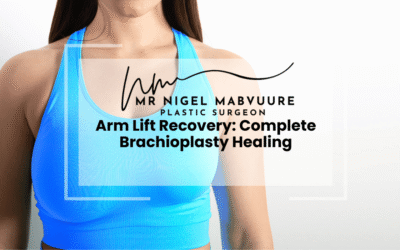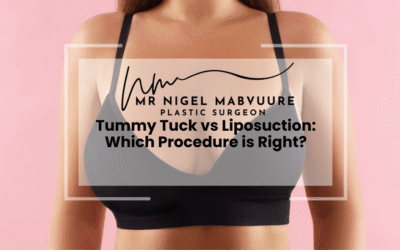Table of Contents
- Understanding Plastic Surgery: Facts vs Fiction in Cumbria
- Is Plastic Surgery Dangerous? Addressing Safety Concerns
- The Natural Look: Why Modern Cosmetic Results Don’t Look Fake
- Plastic Surgery Accessibility: Beyond the Celebrity Price Tag
- Pain Management in Cosmetic Procedures: What to Expect
- Common Misconceptions About Recovery and Downtime
- How to Choose a Qualified Plastic Surgeon in Cumbria
- Making Informed Decisions: Questions to Ask Before Surgery
Understanding Plastic Surgery: Facts vs Fiction in Cumbria
Plastic surgery myths in Cumbria often stem from outdated information and sensationalised media portrayals. Many residents across the Lake District and surrounding areas hold misconceptions about cosmetic procedures that can prevent them from making informed decisions about their aesthetic goals.
One prevalent myth is that plastic surgery and cosmetic surgery are identical. In reality, plastic surgery encompasses both reconstructive procedures (addressing functional issues) and cosmetic enhancements (focusing on appearance). Reconstructive surgery might address birth defects, trauma, or post-cancer reconstruction, while cosmetic procedures like rhinoplasty or facelifts primarily enhance appearance.
Another common misconception is that plastic surgery is exclusively for women. In Cumbria, an increasing number of men are seeking procedures such as gynaecomastia correction, liposuction, and non-surgical treatments like Botox. The gender gap in aesthetic medicine continues to narrow as societal attitudes evolve.
Many Cumbrians also believe that plastic surgery results are permanent. While some procedures offer long-lasting outcomes, factors like ageing, lifestyle choices, and genetics continue to influence your appearance. Understanding that maintenance treatments may be necessary helps patients develop realistic expectations about their surgical journey.
Is Plastic Surgery Dangerous? Addressing Safety Concerns
When considering plastic surgery, safety concerns often top the list of patient worries. The question “Is plastic surgery dangerous?” deserves a nuanced response rather than a simple yes or no. Like any surgical procedure, cosmetic surgery carries inherent risks, but these are significantly minimised when performed by qualified professionals in appropriate settings.
In Cumbria, regulated plastic surgery clinics adhere to strict safety protocols established by the General Medical Council and the Care Quality Commission. These standards ensure proper sterilisation, emergency preparedness, and appropriate anaesthesia administration. Complications such as infection, bleeding, or adverse reactions to anaesthesia are possible but relatively rare when procedures are performed by board-certified surgeons.
The safety profile of different procedures varies considerably. Non-invasive treatments like dermal fillers carry different risks compared to major surgeries such as abdominoplasty. Understanding the specific risks of abdominoplasty and other procedures helps patients make informed decisions about their treatment options.
Pre-operative screening plays a crucial role in ensuring patient safety. Reputable surgeons thoroughly evaluate medical history, current health status, and lifestyle factors before recommending any procedure. This personalised risk assessment helps identify potential complications before they arise, making plastic surgery significantly safer than many people believe.
The Natural Look: Why Modern Cosmetic Results Don’t Look Fake
A persistent plastic surgery myth that troubles many Cumbria residents is the fear of looking “obviously done” or artificial after cosmetic procedures. This misconception stems largely from outdated techniques and the visibility of poor-quality work that draws attention. Today’s aesthetic philosophy has shifted dramatically toward enhancing natural beauty rather than creating dramatic transformations.
Modern plastic surgery techniques prioritise subtle enhancement and preservation of individual characteristics. Advanced technologies and refined surgical approaches allow surgeons to create results that complement a patient’s natural features. For example, contemporary facelift techniques focus on repositioning underlying tissues rather than simply pulling skin tight, avoiding the windswept appearance associated with older methods.
The evolution of breast augmentation illustrates this shift toward natural aesthetics. Surgeons now consider body proportions, tissue characteristics, and lifestyle factors when selecting implant size and placement. The goal is to create balanced, proportionate results that appear as though the patient was naturally endowed with their enhanced figure.
Non-surgical treatments have similarly advanced. Modern dermal fillers and botulinum toxin injections are administered with precision to restore volume and reduce wrinkles while maintaining natural facial movement and expression. The “frozen face” stereotype belongs to the past, as today’s practitioners understand that subtle movement is essential to natural-looking results.
The most successful cosmetic outcomes are those that prompt comments like “You look well-rested” rather than “What work have you had done?” This natural-looking approach has become the gold standard in Cumbria’s reputable clinics, debunking the myth that plastic surgery results are inherently obvious or artificial.
Plastic Surgery Accessibility: Beyond the Celebrity Price Tag
One of the most persistent plastic surgery misconceptions in Cumbria is that aesthetic procedures are exclusively for the wealthy elite. While celebrity transformations often dominate media coverage, the reality is that cosmetic treatments have become increasingly accessible to people from various economic backgrounds.
The range of available procedures now includes options at different price points. Non-surgical treatments like dermal fillers or chemical peels typically cost significantly less than major surgical interventions, providing entry-level options for those interested in aesthetic enhancement. Many clinics also offer tiered treatment plans that allow patients to address concerns gradually rather than committing to comprehensive procedures all at once.
Financing options have expanded the accessibility of plastic surgery. Many Cumbria clinics provide payment plans that spread costs over time, making treatments more manageable for average-income patients. Some procedures may also be covered by insurance when they address functional issues alongside aesthetic concerns, such as rhinoplasty that improves both appearance and breathing.
The democratisation of information has also contributed to greater accessibility. Patients can now research procedures thoroughly online, compare prices between providers, and make informed decisions about which treatments offer the best value. This transparency has helped dispel the myth that plastic surgery is exclusively for the wealthy.
While premium procedures at high-end clinics remain expensive, the notion that all plastic surgery comes with a celebrity price tag is simply untrue. Cumbrians from various financial situations can now access quality aesthetic treatments tailored to their budget and needs.
Pain Management in Cosmetic Procedures: What to Expect
The question “Does plastic surgery hurt terribly?” ranks among the most common concerns for potential patients in Cumbria. This plastic surgery myth often prevents people from pursuing treatments that could significantly improve their quality of life. The reality of pain during and after cosmetic procedures is far more nuanced than many believe.
During surgical procedures, patients typically experience no pain due to anaesthesia. Depending on the complexity and extent of the surgery, surgeons may use local anaesthesia with sedation or general anaesthesia. Modern anaesthetic techniques have advanced significantly, allowing for precise pain control during the procedure itself. The sensation during surgery is not a concern for properly anaesthetised patients.
Post-operative discomfort varies considerably between procedures. Minor treatments like Botox injections might cause only momentary discomfort similar to a pinprick, with no significant pain afterwards. More extensive surgeries such as tummy tucks or breast augmentation typically involve moderate discomfort during recovery, often described as soreness or pressure rather than sharp pain.
Contemporary pain management protocols have revolutionised the recovery experience. Surgeons now employ pre-emptive analgesia (administering pain medication before pain begins), long-acting local anaesthetics, and carefully tailored medication regimens to keep patients comfortable. Many Cumbria clinics use advanced techniques like pain pumps that deliver consistent medication directly to the surgical site.
Patient experiences vary based on individual pain tolerance, procedure type, and adherence to recovery instructions. However, most patients report that the discomfort was less severe than anticipated and well-managed with prescribed medications. The misconception that plastic surgery involves unbearable pain simply doesn’t align with the reality of modern aesthetic medicine.
Common Misconceptions About Recovery and Downtime
Recovery after plastic surgery is surrounded by numerous misconceptions that often create unrealistic expectations for Cumbria patients. One prevalent plastic surgery myth suggests that recovery is uniformly lengthy and debilitating. In reality, downtime varies dramatically depending on the procedure, individual healing factors, and adherence to post-operative instructions.
Non-surgical treatments like dermal fillers or Botox typically require minimal to no downtime, with patients often returning to normal activities immediately or within 24 hours. Minor surgical procedures such as eyelid surgery might necessitate 7-10 days of social downtime, while more extensive surgeries like abdominoplasty or body lifts can require 2-6 weeks before returning to full activity.
Another common misconception is that results are immediately visible after the procedure. While some treatments do provide instant results, surgical procedures typically involve temporary swelling, bruising, and tissue adjustment. The final outcome emerges gradually as healing progresses, with complete results sometimes taking 6-12 months to fully develop. Understanding this timeline helps patients maintain realistic expectations throughout their recovery journey.
Many patients also mistakenly believe that recovery should be pain-free if the surgery was successful. Some discomfort is normal and expected during healing and doesn’t indicate complications. Conversely, others believe that severe pain is inevitable, when in fact, modern pain management techniques have significantly improved patient comfort during recovery.
The myth that recovery requires complete bed rest can actually hinder healing. While adequate rest is essential, gentle movement as advised by your surgeon promotes circulation and helps prevent complications like blood clots. Most recovery protocols now include a graduated return to activity rather than extended immobilisation.
How to Choose a Qualified Plastic Surgeon in Cumbria
Selecting the right plastic surgeon is perhaps the most crucial decision in your aesthetic journey, yet misconceptions about qualifications abound. In Cumbria, as elsewhere in the UK, not all practitioners offering cosmetic procedures have equivalent training or expertise. Understanding the truth about surgical qualifications helps patients make safer choices.
A fundamental plastic surgery fact is that board certification matters significantly. In the UK, look for surgeons registered with the General Medical Council (GMC) and check if they’re on the Specialist Register for Plastic Surgery. Membership in professional bodies such as the British Association of Plastic, Reconstructive and Aesthetic Surgeons (BAPRAS) or the British Association of Aesthetic Plastic Surgeons (BAAPS) indicates adherence to rigorous standards.
Experience with your specific procedure is equally important. A surgeon may be technically qualified but have limited experience with the particular treatment you’re seeking. Ask about their specialisation, how frequently they perform your desired procedure, and request to see before-and-after photos of their previous patients.
The surgical facility’s accreditation is another critical factor often overlooked. Reputable surgeons operate in CQC-registered facilities with proper emergency protocols and safety standards. Avoid practitioners offering significant discounts for procedures performed in unaccredited settings, as this may compromise safety.
Personal rapport shouldn’t be underestimated. A qualified surgeon should listen attentively to your goals, provide honest assessments about achievable outcomes, and never pressure you into additional procedures. They should thoroughly explain risks and benefits, answer all questions clearly, and respect your decision-making process.
By prioritising these factors over convenience or cost alone, Cumbria patients can significantly reduce risks and increase satisfaction with their plastic surgery results.
Making Informed Decisions: Questions to Ask Before Surgery
The journey to successful plastic surgery outcomes begins with thorough preparation and informed decision-making. Many Cumbria patients fall victim to the misconception that all their questions will be addressed without their prompting, or feel intimidated about questioning medical professionals. Understanding which questions to ask can help dispel plastic surgery myths and set realistic expectations.
Before committing to any procedure, ask your surgeon about their specific qualifications and experience with your desired treatment. Request information about how many times they’ve performed this particular procedure and their complication rates. A reputable surgeon will answer these questions transparently rather than deflecting or providing vague responses.
Discuss all potential risks and complications, not just the common ones. While no surgeon can guarantee completely risk-free surgery, understanding the full spectrum of possible outcomes helps you make a truly informed decision. Ask about alternative treatments that might achieve similar results with different risk profiles.
Request detailed information about the recovery process, including:
- Expected downtime and when you can return to work
- Activity restrictions and their duration
- Pain management protocols
- Signs of normal healing versus complications
- Follow-up appointment schedule
Financial transparency is essential. Beyond the surgeon’s fee, inquire about anaesthesia costs, facility fees, post-operative garments, medications, and potential costs for revision procedures if needed. Understanding the complete financial picture prevents unexpected expenses.
Finally, ask to see before-and-after photos of patients with similar starting points to yours. This provides realistic visual expectations of potential outcomes. Some surgeons can even use imaging technology to simulate possible results based on your anatomy.
By asking these questions, Cumbria patients can separate plastic surgery facts from fiction and approach their aesthetic journey with confidence and realistic expectations.
Frequently Asked Questions
Is plastic surgery in Cumbria only for the wealthy?
No, plastic surgery in Cumbria is not exclusively for the wealthy. Many clinics offer procedures at various price points, including more affordable non-surgical options like dermal fillers and chemical peels. Payment plans, financing options, and tiered treatment approaches have made aesthetic procedures more accessible to people from different economic backgrounds. While premium procedures remain expensive, many treatments are within reach for average-income patients.
How painful is recovery after plastic surgery?
Recovery pain varies significantly by procedure. Non-surgical treatments like Botox typically cause minimal discomfort, while more extensive surgeries like tummy tucks involve moderate discomfort described as soreness or pressure rather than sharp pain. Modern pain management protocols, including pre-emptive analgesia, long-acting local anaesthetics, and tailored medication regimens, effectively manage post-operative discomfort. Most patients report that pain is less severe than anticipated and well-controlled with prescribed medications.
Will my plastic surgery results look natural or artificial?
Modern plastic surgery techniques prioritize natural-looking results rather than obvious alterations. Today’s aesthetic philosophy focuses on subtle enhancement and preservation of individual characteristics. Advanced technologies and refined surgical approaches allow surgeons to create outcomes that complement a patient’s natural features. The most successful results prompt comments like “You look well-rested” rather than “What work have you had done?” The stereotypical “obviously done” appearance typically results from outdated techniques or poor-quality work.
How do I know if a plastic surgeon in Cumbria is properly qualified?
A qualified plastic surgeon in Cumbria should be registered with the General Medical Council (GMC) and listed on the Specialist Register for Plastic Surgery. Look for membership in professional organizations like BAPRAS (British Association of Plastic, Reconstructive and Aesthetic Surgeons) or BAAPS (British Association of Aesthetic Plastic Surgeons). Verify they operate in CQC-registered facilities, have specific experience with your desired procedure, and can provide before-and-after photos of previous patients. Personal rapport and transparent communication about risks and benefits are also important indicators of a reputable surgeon.
How long is the recovery period after plastic surgery?
Recovery time varies significantly by procedure. Non-surgical treatments like dermal fillers require minimal to no downtime. Minor surgical procedures such as eyelid surgery typically need 7-10 days of social downtime. More extensive surgeries like abdominoplasty or body lifts can require 2-6 weeks before returning to full activity. Individual factors including age, overall health, and adherence to post-operative instructions also affect recovery duration. Most surgeons provide procedure-specific recovery timelines during consultation.
Are plastic surgery results permanent?
Plastic surgery results are not always permanent. While some procedures offer long-lasting outcomes, factors like aging, lifestyle choices, weight fluctuations, and genetics continue to influence your appearance over time. Non-surgical treatments typically require maintenance, with results lasting months to a few years. Surgical procedures generally provide more enduring results but may require revision as natural aging continues. Understanding that maintenance treatments might be necessary helps patients develop realistic expectations about their surgical journey.




